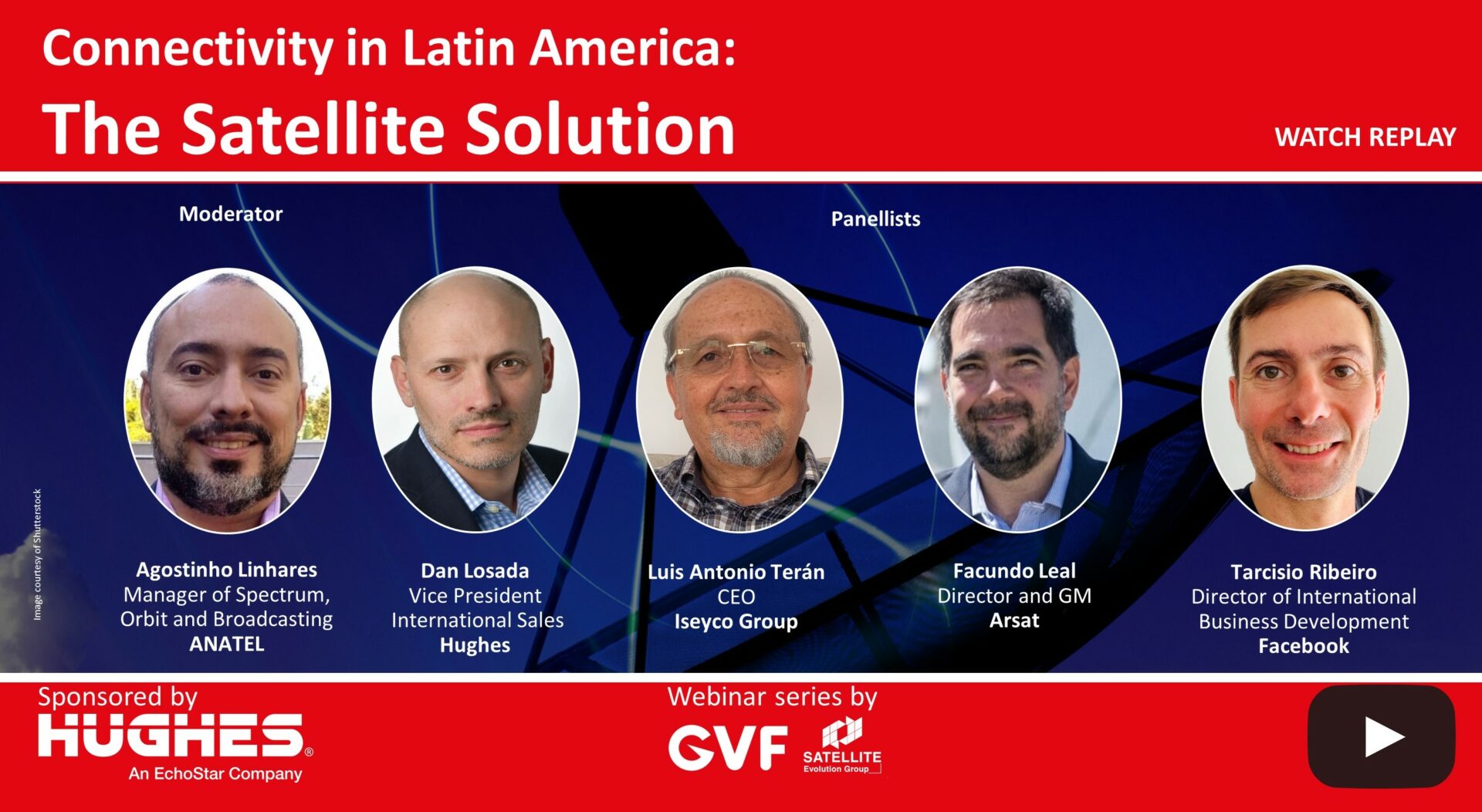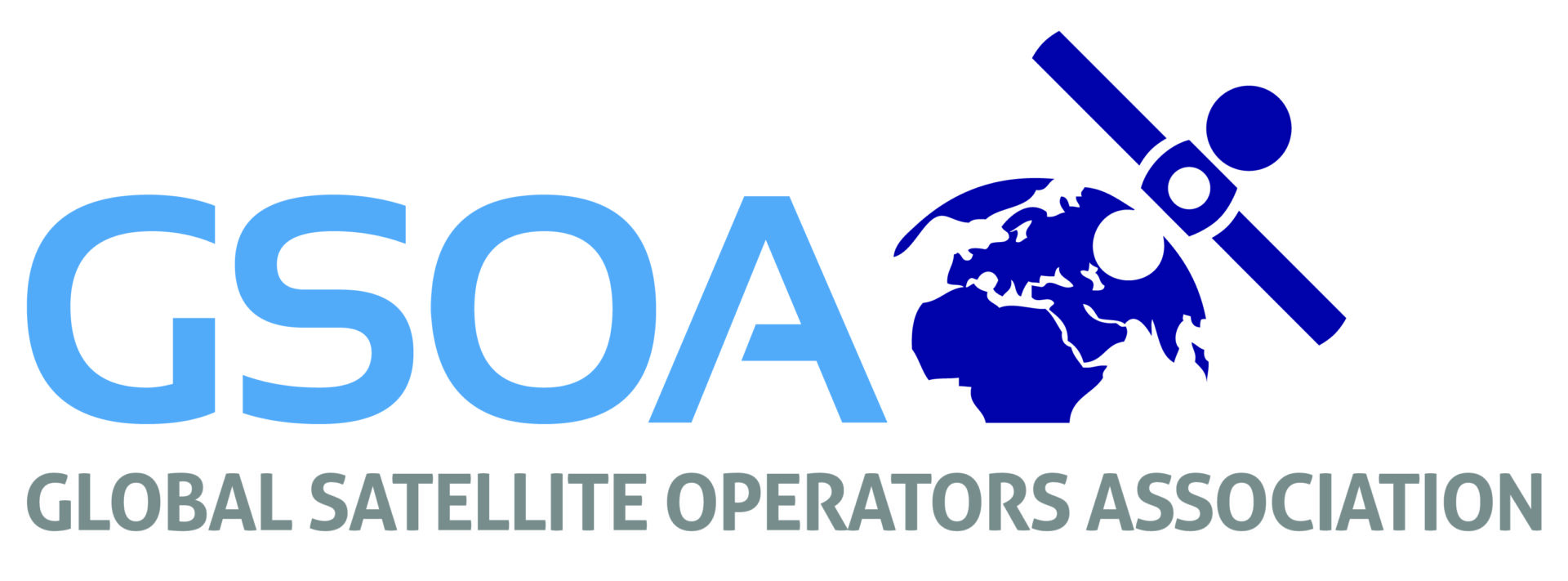Connectivity in Latin America: The Satellite Solution

The background to this latest webinar in the GVF-SEG series are the millions of small, medium, and large enterprises, and an even larger number of individuals, lacking needed internet connectivity across Latin America. To paraphrase one of today’s panellists, Tarcisio Ribeiro, Director of International Business Development, Facebook, we need to overcome the digital marginalisation of populations.
Also featuring as panellists Dan Losada, Vice President International Sales, Hughes; Luis Antonio Terán, CEO, Iseyco Group; and, Facundo Leal, Director & General Manager, ArSat; and moderated by Agostinho Linhares, Manager of Spectrum, Orbit & Broadcasting, Anatel, this Hughes sponsored event generated lively discussion of some 70-minutes duration encompassing an exploration of needs acutely felt in remote areas beyond terrestrial networks and in fast developing and content-hungry urban environments.
The moderator-led dialogue began with inviting panellists’ to voice their anticipation of what is exciting on the 12-18 month Latin American connectivity horizon. The Facebook view noted the pace and character in evolving connectivity innovation, and whilst “all the easy things have been done” it is new satellite initiatives that are making the difference. For Hughes, the expansion of high capacity architectures is at the heart of change, exemplified by Hughes’ Jupiter 3, which will bring not only a leap in capacity but a leap in the users’ quality of experience. With ArSat, the horizon also features developments in the HTS environment, exemplified by Argentina’s own SG-1 (formerly Arsat-3) Ka-band satellite, a small GEO to be launched in 2023, the construction of which employs an increased use of Argentine subsystems. The Iseyco Group purview was focused on the impact that satellite is having on changing the rural connectivity environment, particularly for schools and even more particularly to the challenges for education during times of pandemic lockdown.
This was just the start of a revealing webinar on many more topics, including Wi-Fi Hotspots and their business models, extending services through non-monolithic architectures, and IoT, and if you missed it you haven’t missed out because you can catch up with the video recording, and the Facebook panellist’s closing remarks on his ”big hairy audacious goal”, here.
Q & A continued….
The following questions were posed through the chat function during the panel. Thank you to our audience for taking an active part by asking questions, and to our panellists for their time to answer them after the webinar ended… (Please note more questions and answers will appear here as we receive them from the panellists)
1. Can we repeat which satellite ARSAT is developing and which Hughes satellite they are currently using? Thank you!
Facundo Leal (ArSat): ArSat is in the process of manufacturing a 60 Gbps Ka-band satellite with coverage over Argentina. At the moment we are using the Telesat T19 satellite in Ka-band supplied by Hughes.
2. How many people does Hughes connect directly and through these alliances throughout LATAM?
Dan Losada (Hughes): With our own high-throughput satellite fleet and our technology enabling connectivity from more than 60 satellites globally, Hughes powers the networks on which millions of consumers, businesses, governments and communities depend. We serve more than 1.5 million HughesNet customers across the Americas, which includes more than 349,000 home and small business subscribers in Latin America. Hughes technology supports more than 39,000 Community Wi-Fi Hotspots worldwide, including 1,500 Hughes Express Wi-Fi hotspots in partnership with Facebook across Latin America.
3. What will be the 3 main benefits for LatAm with the launch of the new Satellite? Any country in particular will gain more?
Dan Losada (Hughes): JUPITER 3 will bring more than 500 Gbps of capacity across two continents, more than doubling the capacity of the entire Hughes JUPITER Satellite Fleet. The satellite is designed to target high-speed capacity in areas where we know there are homes that need to be connected. The satellite will enable us to offer HughesNet service plans of up to 100 Mbps down – helping to meet the demand for faster broadband across the region.
4. It’s clear that satellite internet is a great solution in rural areas that are off-grid, but – besides HughesNet – there is *another* company that’s getting a lot of press: Starlink. Considering that they are targeting Latin America market right now, and the hype that Elon Musk is creating around the company and the service, does this create a positive momentum around satellite internet services where HughesNet can capitalize? How?
Facundo Leal (ArSat): Of course Starlink is the new player in the world with a very interesting proposal. For Argentina the solution presented is very expensive for the rural market and the low latency does not affect the market that we are addressing. We will discuss with them once the service is available, but we foresee that the Ka-band GEOs will be very important for Latin America, we have millions of inhabitants looking for low-cost internet.
Dan Losada (Hughes): We welcome new entrants to the satellite Internet category, especially in serving the rural customer, who has been largely neglected by cable and wire-line providers. The fact is that demand is outpacing capacity across Latin America, now and for the foreseeable future. No one provider will be able to meet that demand-and, indeed, all the providers currently in the market will not have enough capacity to serve the anticipated usage.
5. Can you disclose how many people is connected using satellite internet services around the world – or in Latin America – and what’s the impact of connecting people that’s now disconnected to the sustainability of Facebook’s business model.
Dan Losada (Hughes): Across the Americas, there are approximately 2 million satellite Internet subscribers. There is no impact on that base of customers from the Express Wi-Fi deployments. This is because Express Wi-Fi serves a different customer – usually one who cannot afford to have a subscription service at their home. At Hughes, we believe both types of service are essential to connecting more people and helping to bridge the digital divide.
6. Hughes have HTS Ka and LEO thorough One Web infrastructure. How do you see LEO constellations plugging into the ecosystem will they threat or hurt your traditional business?
Dan Losada (Hughes): At Hughes, we consider GEO and LEO satellites to be complementary. High-throughput geostationary satellites offer higher speed, more bandwidth and lower cost per bit. Low earth orbit satellites offer lower latency and global coverage (reaching into places like the Arctic, where GEO satellites cannot reach).
The lower latency of LEO constellations is attractive to a small part of the consumer market – that is, the fast-paced, multi-player gaming customer. On the other hand, 70-80% of Internet traffic is video, for which GEO satellites are the ideal and most cost-efficient transport.
As for the enterprise market, we do expect that there will be instances in which LEO satellites will be the ideal solution – such as in the Arctic region, where we recently were selected to deploy OneWeb service for the U.S. Air Force Research Lab. What’s more, we believe that multi-transport solutions that leverage the relative benefits of different transports – LEO and GEO or LTE and GEO, for example – will serve some segments of the market.
